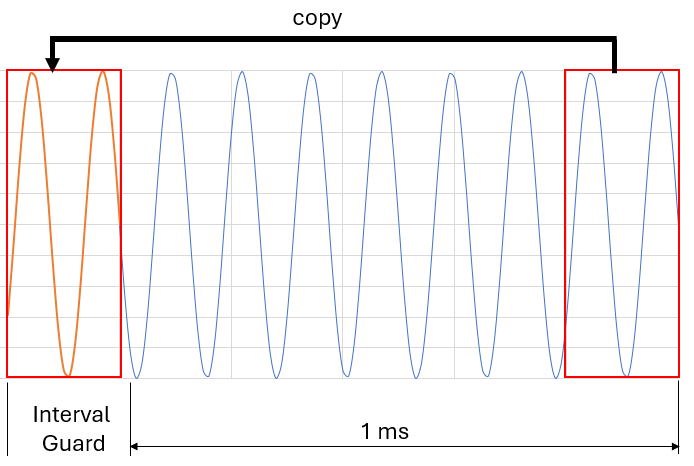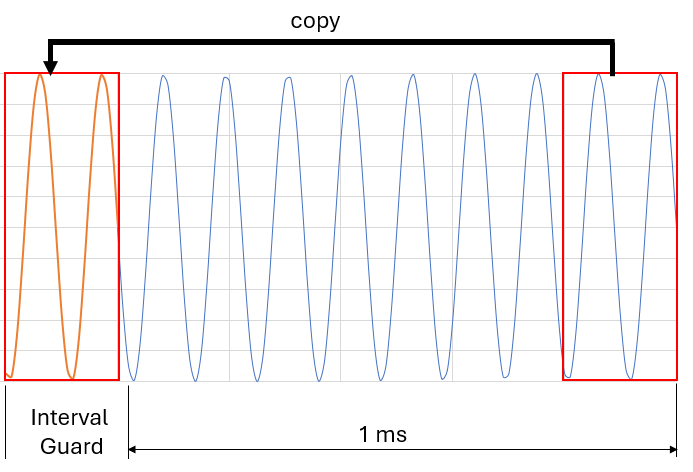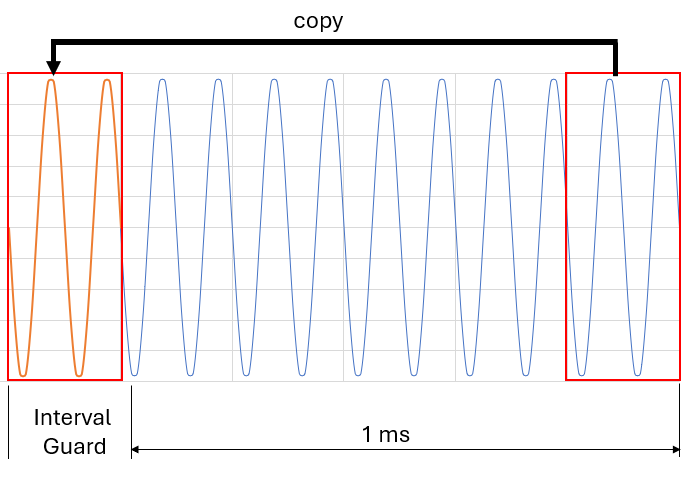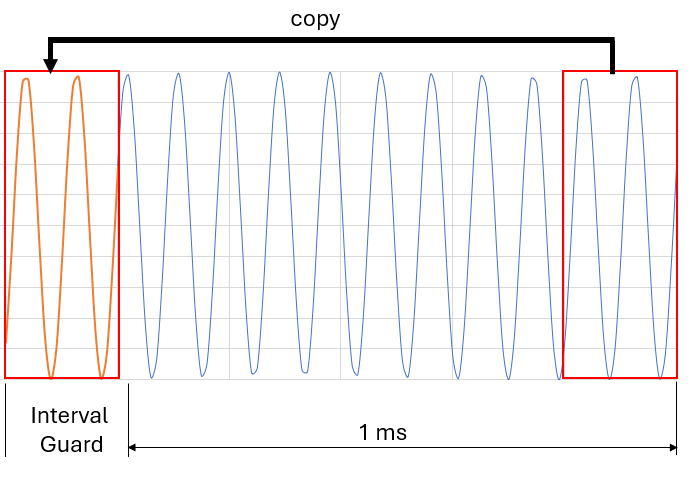The combination of the guard interval and orthogonality can be seen as the most technically innovative part of DAB radio.
Explained without being strenuous to understand mathematics. Orthogonality means that the end of the symbol has perfect continuity with the beginning of the symbol.
We can also explain orthogonality as the product of two orthogonal waves, which means their duration’s are 1ms each, and they are spaced at 1kHz. The mathematical multiplication of the two signals would be 0.
In Radio Frequency (RF) engineering, it means there are no inter-modulation products, so there is no carrier interference between all carriers (no inter-symbol interference, or ISI, at all).
If you were to make a drawing of a 1ms symbol sinusoidal wave (the symbol), and you cut the drawing out in a ribbon, you would be able to connect the end of the ribbon to the beginning of the beginning, and there would be no phase shift. In DAB, this is referred to as symbol continuity.
Caution: If you really want to try the above, the carrier frequency should be a multiple of 1kHz, which lasts exactly 1ms. Because then only you will have an orthogonal wave where the end fits the beginning.
Doing this is important for the guard interval because the receiver’s phase detection will start normally during the 1-ms interval.
Although delayed symbols due to greater transmission distances, transmitted by other SFN transmitters, will be detected later by the receiver. Therefore, to maintain phase continuity, the guard interval must have the same phase (remember symbols phases contain the information (Phase Modulation).
As we have seen, due to the orthogonal principle, you can paste a sequence of the end of the symbol to the beginning without phase discontinuity. So, it is logical to copy a piece of the end of the 1ms symbol into the save guard.
It will maintain phase continuity and prevent inter-symbol interference (ISI).
The choice of 0.246 ms for the guard interval is based solely on the desired distance between two different SFN transmitters.
Making the save guard shorter will reduce the distance between two SFN transmitters. Making it longer would waste bandwidth!
The 0,246 ms for DAB Mode I is only a trade-off between the distance we want to make it work and the efficiency of the bandwidth.
Some simulations
Below is a frequency of 8Khz phase 0° where the last 200 µs of the signal was copied as a guard interval and pasted before the 1ms signal. Note that continuity is maintained.
(the signal connects nicely)

This principle remains valid as long as the signals are multiples of 1kHz (orthogonality). The following Excel simulations demonstrate this.
The simulations below show, in succession:
- 9kHz phase 0°
- 10kHz phase 0°
- 11kHz phase 45°
It is clear that phase continuity is maintained as long as the frequency is a multiple of 1kHz. The phase does not matter, regardless of which phase is applied (modulation); continuity is always maintained.



